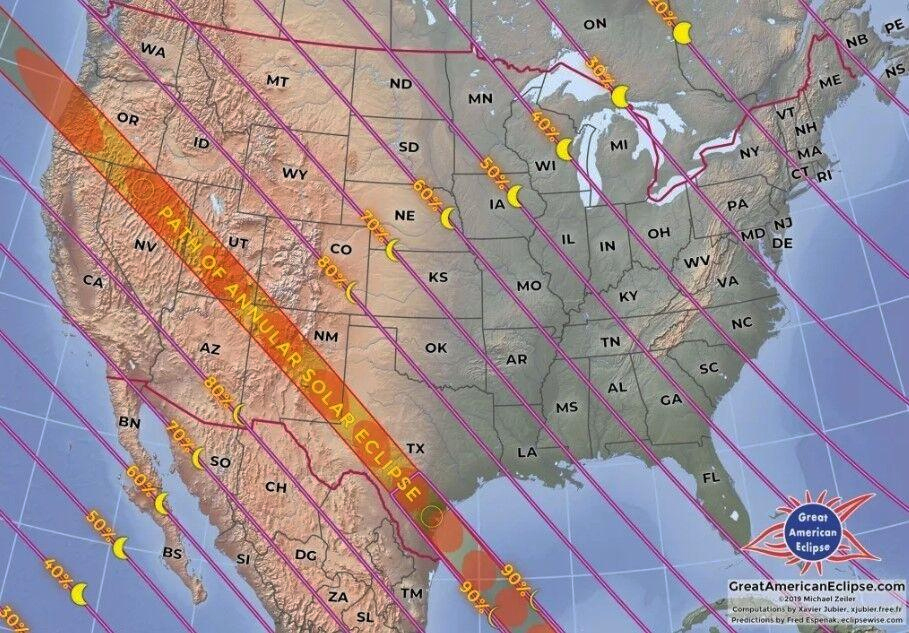Kentucky to see partial solar eclipse this weekend
Published 10:56 am Thursday, October 12, 2023
|
Getting your Trinity Audio player ready...
|
KENTUCKY TODAY
An annular solar eclipse will be visible in the southern and western parts of the United States this weekend, although in Kentucky the coverage will only be between 40% in the east to a little better than 50% in western Kentucky.
Unlike total solar eclipses, such as was seen in Kentucky in 2017 and the next one expected on April 8, 2024, the sun is never completely blocked by the Moon during an annular solar eclipse, as it is further from the Earth, so it will appear smaller. However, those in the path of totality, which will be between Oregon and Texas, can still expect to see the ring of fire.
Just like during a total eclipse, the National Aeronautics and Space Administration says it is never safe to look directly at the sun during an annular eclipse without specialized eye protection designed for solar viewing. You can also use an indirect viewing method, such as a pinhole projector. They warn that viewing any part of the bright sun through a camera lens, binoculars or a telescope without a special-purpose solar filter secured over the front of the optics, will instantly cause severe eye injury.
The eclipse will first be visible in Oregon around 9:13 a.m., Pacific Time, and end in Texas around 12:03 p.m., Central Time, which will likely be the best time to see it in Kentucky, weather permitting. It will then move beyond the U.S. and over Mexico, Central America and finally South America before ending around sunset off Natal, Brazil in the Atlantic Ocean.
Twenty-one Kentucky counties experienced totality during the August 2017 total solar eclipse, or Great American Eclipse, as it was called by some. Its path ran from Oregon to South Carolina. But viewers won’t have to wait long for the next one.
A total solar eclipse will also have a lengthy path across the United States on April 8, 2024, running from Texas to Vermont, and including parts of west Kentucky. Cities such as Paducah, which was also in the dark in 2017, and Henderson will experience totality next spring. Indianapolis and Cleveland will be near the center of the path.
This will be the last total solar eclipse visible in a large part of the contiguous United States until Aug. 12, 2045.






